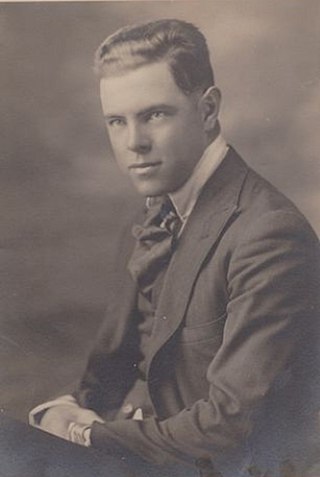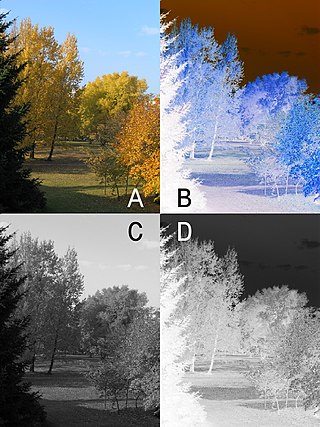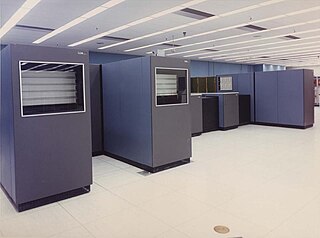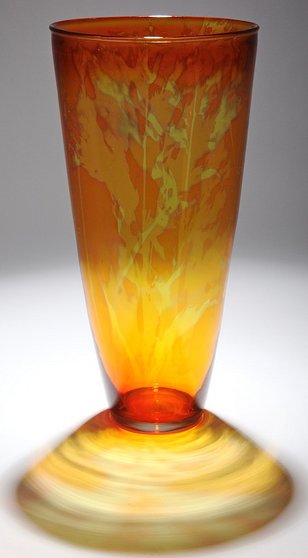Related Research Articles

Ultraviolet (UV) is a form of electromagnetic radiation with wavelength shorter than that of visible light, but longer than X-rays. UV radiation is present in sunlight, and constitutes about 10% of the total electromagnetic radiation output from the Sun. It is also produced by electric arcs, Cherenkov radiation, and specialized lights, such as mercury-vapor lamps, tanning lamps, and black lights. Although long-wavelength ultraviolet is not considered an ionizing radiation because its photons lack the energy to ionize atoms, it can cause chemical reactions and causes many substances to glow or fluoresce. Many practical applications, including chemical and biological effects, derive from the way that UV radiation can interact with organic molecules. These interactions can involve absorption or adjusting energy states in molecules, but do not necessarily involve heating.

A blueprint is a reproduction of a technical drawing or engineering drawing using a contact print process on light-sensitive sheets. Introduced by Sir John Herschel in 1842, the process allowed rapid and accurate production of an unlimited number of copies. It was widely used for over a century for the reproduction of specification drawings used in construction and industry. The blueprint process was characterized by white lines on a blue background, a negative of the original. The process was not able to reproduce color or shades of grey.

Photographic processing or photographic development is the chemical means by which photographic film or paper is treated after photographic exposure to produce a negative or positive image. Photographic processing transforms the latent image into a visible image, makes this permanent and renders it insensitive to light.

In photography, a negative is an image, usually on a strip or sheet of transparent plastic film, in which the lightest areas of the photographed subject appear darkest and the darkest areas appear lightest. This reversed order occurs because the extremely light-sensitive chemicals a camera film must use to capture an image quickly enough for ordinary picture-taking are darkened, rather than bleached, by exposure to light and subsequent photographic processing.

The albumen print, also called albumen silver print, was published in January 1847 by Louis Désiré Blanquart-Evrard, and was the first commercially exploitable method of producing a photographic print on a paper base from a negative. It used the albumen found in egg whites to bind the photographic chemicals to the paper and became the dominant form of photographic positives from 1855 to the start of the 20th century, with a peak in the 1860–90 period. During the mid-19th century, the carte de visite became one of the more popular uses of the albumen method. In the 19th century, E. & H. T. Anthony & Company were the largest makers and distributors of albumen photographic prints and paper in the United States.

The gelatin silver process is the most commonly used chemical process in black-and-white photography, and is the fundamental chemical process for modern analog color photography. As such, films and printing papers available for analog photography rarely rely on any other chemical process to record an image. A suspension of silver salts in gelatin is coated onto a support such as glass, flexible plastic or film, baryta paper, or resin-coated paper. These light-sensitive materials are stable under normal keeping conditions and are able to be exposed and processed even many years after their manufacture. The "dry plate" gelatin process was an improvement on the collodion wet-plate process dominant from the 1850s–1880s, which had to be exposed and developed immediately after coating.

Photogravure is a process for printing photographs, also sometimes used for reproductive intaglio printmaking. It is a photo-mechanical process whereby a copper plate is grained and then coated with a light-sensitive gelatin tissue which had been exposed to a film positive, and then etched, resulting in a high quality intaglio plate that can reproduce detailed continuous tones of a photograph.

Whiteprint describes a document reproduction produced by using the diazo chemical process. It is also known as the blue-line process since the result is blue lines on a white background. It is a contact printing process which accurately reproduces the original in size, but cannot reproduce continuous tones or colors. The light-sensitivity of the chemicals used was known in the 1890s and several related printing processes were patented at that time. Whiteprinting replaced the blueprint process for reproducing architectural and engineering drawings because the process was simpler and involved fewer toxic chemicals. A blue-line print is not permanent and will fade if exposed to light for weeks or months, but a drawing print that lasts only a few months is sufficient for many purposes.

Ozalid is a registered trademark of a type of paper used for "test prints" in the monochrome classic offset process. The word "Ozalid" is an anagram of "diazol", the name of the substance that the company "Ozalid" used in the fabrication of this type of paper.

Sun printing may refer to various printing techniques which use sunlight as a developing or fixative agent.

The IBM 1360 Photo-Digital Storage System, or PDSS, was an online archival storage system for large data centers. It was the first storage device designed from the start to hold a terabit of data (128 GB). The 1360 stored data on index card sized pieces of stiff photographic film that were individually retrieved and read, and could be updated by copying data, with changes, to a new card. Only six PDSSs were constructed, including the prototype, and IBM abandoned the film-card system and moved on to other storage systems soon after. Only one similar commercial system seems to have been developed, the Foto-Mem FM 390, from the late 1960s.

Microforms are scaled-down reproductions of documents, typically either films or paper, made for the purposes of transmission, storage, reading, and printing. Microform images are commonly reduced to about 4% or 1⁄25 of the original document size. For special purposes, greater optical reductions may be used.
A UV coating is a surface treatment which either is cured by ultraviolet radiation, or which protects the underlying material from such radiation's harmful effects. They have come to the fore because they are considered environmentally friendly and do not use solvents or produce volatile organic compounds (VOCs), or Hazardous Air Pollutant (HAPs.

Architectural reprography, the reprography of architectural drawings, covers a variety of technologies, media, and supports typically used to make multiple copies of original technical drawings and related records created by architects, landscape architects, engineers, surveyors, mapmakers and other professionals in building and engineering trades.

Photosensitive glass, also known as photostructurable glass (PSG) or photomachinable glass, is a crystal-clear glass that belongs to the lithium-silicate family of glasses, in which an image of a mask can be captured by microscopic metallic particles in the glass when it is exposed to short wave radiations such as ultraviolet light. Photosensitive glass was first discovered by S. Donald Stookey in 1937.

Photographic film is a strip or sheet of transparent film base coated on one side with a gelatin emulsion containing microscopically small light-sensitive silver halide crystals. The sizes and other characteristics of the crystals determine the sensitivity, contrast, and resolution of the film.
A heliographic copier or heliographic duplicator is an apparatus used in the world of reprography for making contact prints on paper from original drawings made with that purpose on tracing paper, parchment paper or any other transparent or translucent material using different procedures. In general terms some type of heliographic copier is used for making: Hectographic prints, Ferrogallic prints, Gel-lithographs or Silver halide prints. All of them, until a certain size, can be achieved using a contact printer with an appropriate lamp but for big engineering and architectural plans, the heliographic copiers used with the cyanotype and the diazotype technologies, are of the roller type, which makes them completely different from contact printers.
A contact copier, is a device used to copy an image by illuminating a film negative with the image in direct contact with a photosensitive surface. The more common processes are negative, where clear areas in the original produce an opaque or hardened photosensitive surface, but positive processes are available. The light source is usually an actinic bulb internal or external to the device
The conservation and restoration of film is the physical care and treatment of film-based materials. These include photographic film and motion picture film stock.

IBM manufactured and sold microfilm products from 1963 till 1969. It is an example of IBM attempting to enter an established market on the basis of a significant technical breakthrough.
References
- ↑ "The IPTE Exhibition: Metro Kalvar", The British Journal of Photography, 26 November 1965
- ↑ "Kalvar Corporation, Plaintiff-Appellant, v. Xidex Corporation, Defendant-Appellee", 556 F.2d 966 (9th Cir. 1977)
- ↑ David Barton and Roger Sherman, "The Price Profit Effects of Horizontal Merger, a case study", Journal of Industrial Economics, Volume 33(2) (1984), pg. 165–177
- ↑ Robert T. Nieset, "The Basis of the Kalvar System of Photography", Journal of Photographic Science, Volume 10 (1962), pg. 188
- ↑ "Material Name: Kalvar microfilm", Abbey Newsletter, Volume 15, Number 8, December 1991
- ↑ "Comment and News", Microform Review, 1972, pg. 164